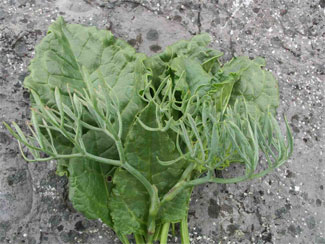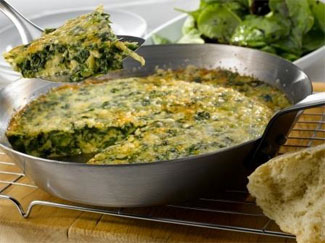Shoreline Vegetables
 You don’t have to be walking in wild windswept places to find good things along the shoreline at this time of year – shoreline plants will grow anywhere they can get a hold in salty areas between the sea and the land proper, so there are plenty of foraging opportunities on summer walks along the edge.
You don’t have to be walking in wild windswept places to find good things along the shoreline at this time of year – shoreline plants will grow anywhere they can get a hold in salty areas between the sea and the land proper, so there are plenty of foraging opportunities on summer walks along the edge.
The range gradually changes through the season but there is overlap between the times when the common varieties are available and no shortage of edible finds right through the summer.
Two of the most widely used for culinary purposes are Sea Spinach – also known as Sea Beet – which is easily identifiable because it has shiny green leaves with fleshy stems and looks quite similar to garden spinach, and Samphire, a plant with finely branched tubular stems.
There is no argument about sea spinach, which is a fleshier, more strongly flavoured and salt-tanged version of the familiar vegetable, which is to be found on the dry shore beyond the tide or on sea walls, and is not too challenging in the kitchen.
Pick the leaves young, while tender, trim and wash well then use them whole or with the chard-like stems removed. They make a balanced accompaniment to bland, soft foods, such as eggs, that benefit from the salty tang and robust texture, and can be cooked or used fresh in salads when young and tender.
Sea spinach first shows in spring; Samphire follows later in the summer – and, with two main types (rock samphire, and marsh samphire) having, apparently, many hard to identify cousins, it is the source of much confusion.
Connoisseurs claim that rock samphire (crithmum maritimum, a relative of fennel and a plant once cultivated in gardens) is superior to the more common marsh samphire (salicornia europaea, a member of the beet family also known as ‘glasswort’). For practical purposes when foraging, it makes little difference as pickling has been the traditional treatment for both, and they can also be cooked in the same way to eat fresh, or even used raw in salads.
That great cookery writer, the late Jane Grigson, suggested using samphire as a summer delicacy to be enjoyed like asparagus, ie boiled or steamed until just tender then served with melted butter or hollandaise sauce. Now there’s style.
 RECIPE: GREEN FRITTATA WITH SEA SPINACH SALAD
RECIPE: GREEN FRITTATA WITH SEA SPINACH SALAD
A quick and easy holiday meal that could be made with cultivated spinach or sea spinach, as available, or a mixture – remembering that the flavour and texture of sea spinach is more robust than the usual kind; taste it raw to familiarise yourself with the flavour. If uncertain about using sea spinach instead of a familiar vegetable, experiment with a single serving before making a family sized batch!
If you’re not sure about it, try using less and mix it off with more familiar vegetables – or use it only in the frittata, or in the salad rather than both. Wash sea spinach leaves carefully, and trim before use. Salt should not be needed as the sea spinach is naturally salty.
Click for recipe





There are currently no comments
Leave a comment
Not a member? Register for your free membership now!
Or leave a comment by logging in with: